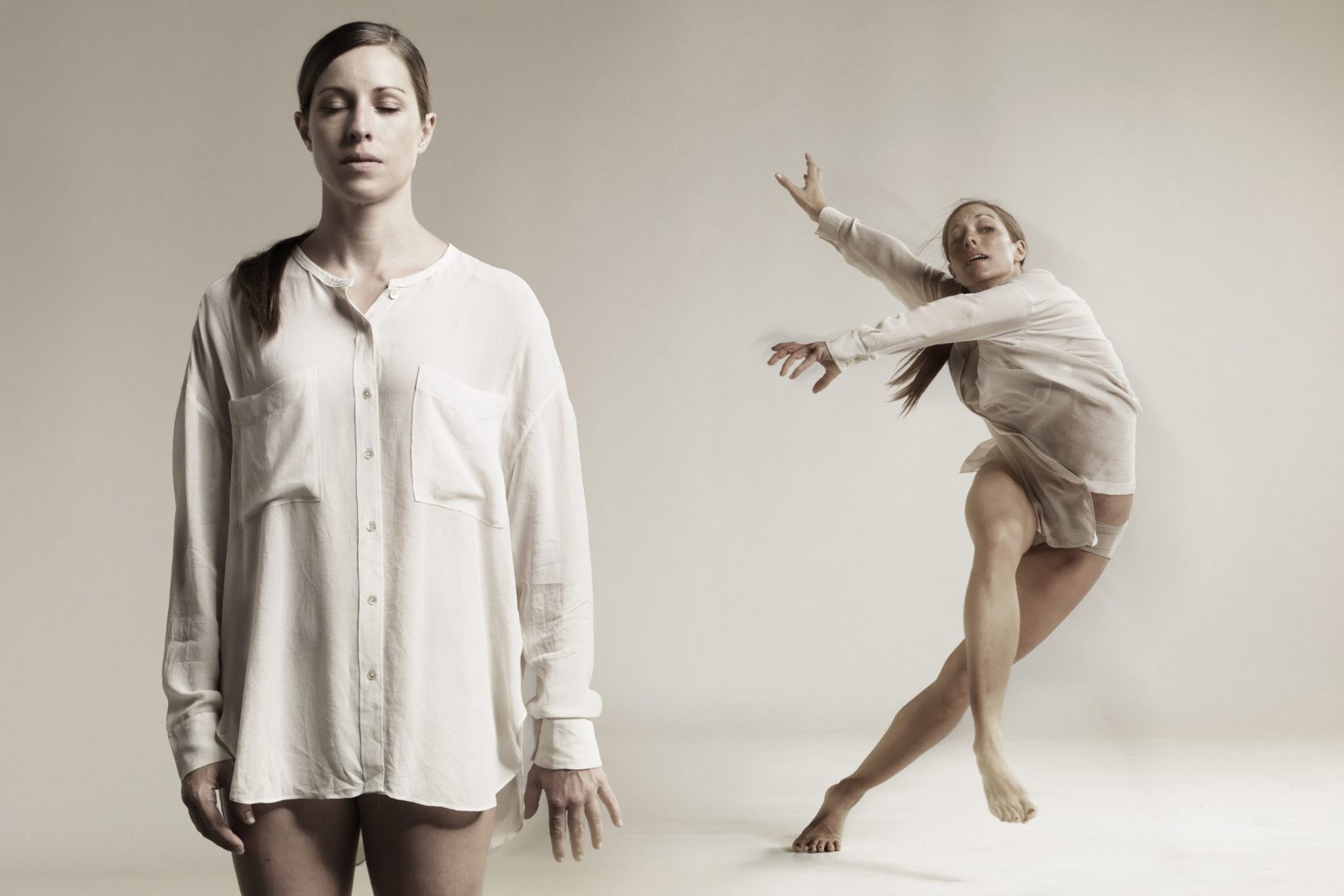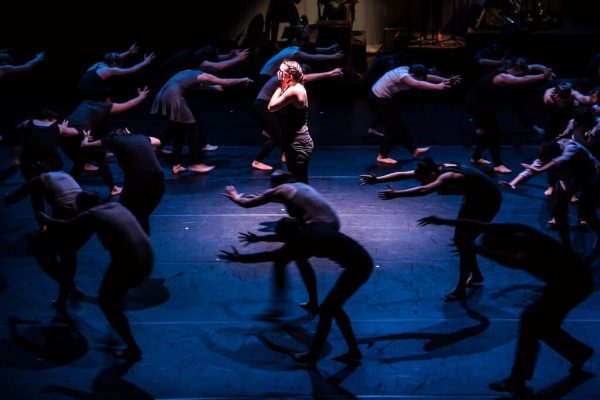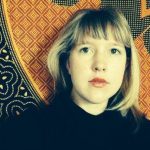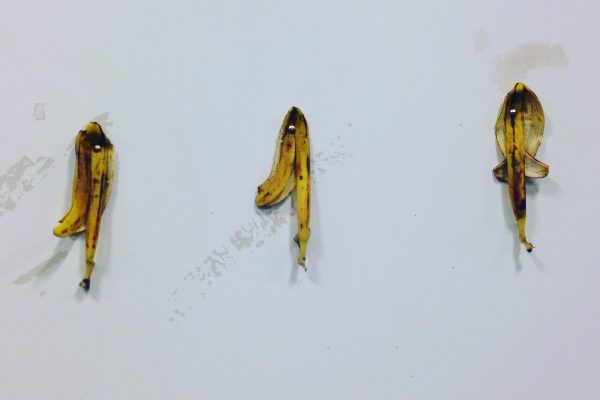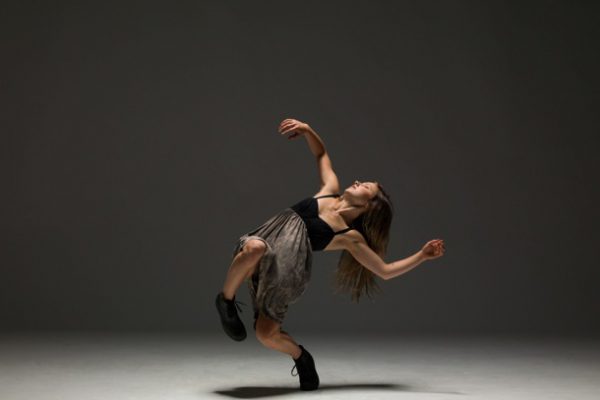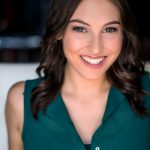It’s no easy task to communicate specific ideas through contemporary dance. It can be tricky to make the abstract movement of Gumby-like bodies live up to the lofty themes in a choreographer’s imagination. Luckily, in Lesley Telford’s latest creation, she has chosen both her topic and her collaborators well.
Spooky Action at a Distance draws from subject matter that is well served by the complex spatial patterns and temporal relationships of a group of young, moving bodies. The new work premiered as part of a triple bill of Telford’s choreography entitled Three Sets/Relating at a Distance at Vancouver’s Scotiabank Dance Centre last week, presented as part of the Artist-in-Residence program.
The piece is an interdisciplinary collaboration with poet Barbara Adler, who sets up the work by comically explaining the phenomenon of quantum entanglement to the audience (with the help of Wikipedia, of course) and then clarifies that the piece is, in fact, not about physics at all but inspired by it. “Spooky at a distance” is a term coined by Albert Einstein that refers to particles that are so connected to one another that they can affect each other instantaneously and across any distance. Adler’s introduction, combined with her beautifully handcrafted, tiny books of poetry (distributed to the audience during intermission), preps the audience by situating us in a world that is equal parts poetry and science. The miniature books are printed on graph paper and, while they are not detailed to the level of the particle, they draw my focus to imagery held in the recesses of memories from high school science class. This metaphor of the experiment, with both known and unknown elements, did well to place the audience in our role as observers of the microscopic.
The work was presented along with other repertoire, If, a trio based on an Anne Carson poem, and the duet My tongue, your ear, with text by Wislawa Szymborska. But Spooky Action at a Distance was the standout piece of the evening. It’s clearly a work that has yet to be expanded upon to its full size as an evening-length offering. Ultimately, it’s a work about relationships — how things (human or other) interact, organize and coexist. The dancers portrayed these concepts not in a literal ways but through poetic imagery supported by a distinctive lighting design by Kyla Gardiner. At one point the dancers group together, orbiting a series of lights radiating outward from a single nucleus in a complex geometric pattern projected onto the white floor. Later, one dancer again orbits another, who is engaged in a sequence of expansive movement, one acting as the observed particle to another. Throughout the work, relationships of connection and influence are seen (and heard), and near the end the metaphorical thread that connects us all is made visible when an elastic is pulled across the stage. Dancers then moved over, under and around, entangling themselves in the line that divided the space left to right.
There are elements of Telford’s dance vocabulary that offer familiar and hints of her influence, such as Crystal Pite and Nederlands Dans Theater. But in this work her musical phrasing is the most arresting element. The movements are strung together with rhythmic diversity, punctuated acutely with the consideration of a composer or a beat poet. The performers are a cast of young dancers, most of whom have completed Arts Umbrella’s Dance Graduate Program or who are current students in the Performance Research Program that Telford leads, also at Arts Umbrella. They are fiercely talented dancers and their elastic bodies exhibit a remarkable ability to shift swiftly between qualities and initiation points.
The objective vantage point of the piece’s scientific inspiration paired well with the humanity and sensitivity of Adler’s poetry and her live delivery from offstage. Her voice was familiar and friendly in contrast to the highly technical and virtuosic, though unaffected dancing. The prose moved between the singularity of first-person narrative and the plurality of large, inclusive statements about all of us. The effect of this contrast was a resulting feeling that Adler is speaking to us in a way that contemporary dance, with its superhuman bodies, doesn’t always make the average person feel a part of.
Telford has recently settled back into Vancouver after years abroad dancing with Nacho Duato’s Compañia Nacional de Danza in Madrid and more recently Netherlands Dans Theater. Inverso Productions is the platform for her collaborative ventures with visual artists, poets, musicians, filmmakers and scientists. If Three Sets/Relating at a Distance is an example of Telford’s interest in the conversation between forms, she demonstrates a good grasp on how to create dialogue without overwhelming her audience. The text is sparse enough that the conversation isn’t crowded and when it does swell to a dense and driving delivery late in the work, it is with effect.
The three works that made up the evening are related not only in aesthetics, physicality and themes but also in their peculiar endings. Each of them end on a similar unanswered question. None of the works ease into their ending or arrive to their natural conclusion, but each end unsentimentally, almost matter-of-factly. They are modest endings for works about large universal themes. Perhaps, once you let your mind fully go down the rabbit hole to consider the spooky interconnectedness of quantum entanglement, there is no way back to the everyday, mundane existence other than to simply snap back to the big picture.
<
Tagged: Contemporary, BC , Vancouver
